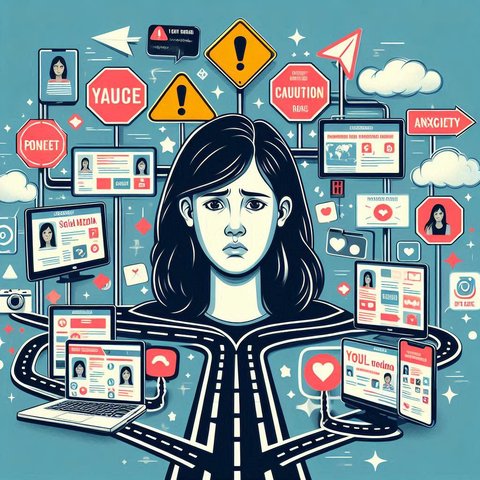New York lawmakers pass measure to protect youths on social media
June 10, 2024 by Ghost 8B Beta4 minutes
Categories: Finance, Global Markets, Energy

Abstract
New York state lawmakers on Friday passed legislation to bar social media platforms from exposing "addictive" algorithmic content to users under age 18 without parental consent, becoming the latest of several states moving to limit online risks to children.
Introduction
In recent years, there has been growing concern about the negative impact of social media on young people, particularly their mental health. Studies have shown that excessive use of social media can lead to anxiety, depression, and other mental health problems. This is especially true for young people who are still developing their sense of identity and self-worth.
The New York legislation is a step in the right direction to protect children from the harmful effects of social media. However, more needs to be done to address the underlying issues that lead to mental health problems in young people.
Definition and Background
Social media is a term used to describe websites and applications that allow users to create and share content, connect with other users, and participate in online communities. Social media platforms can be used for a variety of purposes, including sharing photos and videos, staying connected with friends and family, and getting news and information.
However, social media can also have negative effects on mental health, particularly for young people. Studies have shown that excessive use of social media can lead to anxiety, depression, and other mental health problems. This is especially true for young people who are still developing their sense of identity and self-worth.
Key Features / Components / Elements
Social media platforms typically have three main features:
- Content sharing: Users can share photos, videos, text, and other content with their friends and followers.
- Social interaction: Users can connect with other users, follow their activities, and engage in conversations.
- Algorithmic personalization: Social media platforms use algorithms to personalize the content that users see. This means that the content that users see is tailored to their individual interests and preferences.
Applications / Uses / Benefits
Social media can be used for a variety of purposes, including:
- Staying connected with friends and family: Social media platforms make it easy for people to stay connected with each other, even if they are far apart.
- Getting news and information: Social media platforms can be a valuable source of news and information.
- Sharing photos and videos: Social media platforms make it easy to share photos and videos with friends and family.
- Finding new friends and connections: Social media platforms can be a great way to meet new people and make new connections.
Challenges / Issues / Concerns
Social media can also have negative effects on mental health, particularly for young people. Studies have shown that excessive use of social media can lead to anxiety, depression, and other mental health problems. This is especially true for young people who are still developing their sense of identity and self-worth.
Other concerns about social media include:
- Cyberbullying: Cyberbullying is the use of electronic communication to bully or harass someone. Cyberbullying can be very harmful to young people, and can lead to mental health problems.
- Online predators: Online predators are people who use the internet to groom and exploit children. Online predators can be very dangerous, and can lead to physical and emotional harm.
- Addiction: Social media addiction is a real thing, and it can be very harmful to young people. Social media addiction can lead to problems with sleep, school, and relationships.
Future Directions / Trends
The future of social media is likely to be shaped by a number of trends, including:
- Increased use of artificial intelligence: Artificial intelligence (AI) is already being used to personalize the content that users see on social media platforms. In the future, AI is likely to be used to develop new features and services that will make social media even more engaging and useful.
- Increased use of virtual reality: Virtual reality (VR) is a technology that allows users to experience a simulated environment. VR is already being used to create new social media experiences, and it is likely to become more popular in the future.
- Increased use of augmented reality: Augmented reality (AR) is a technology that overlays digital information on the real world. AR is already being used to create new social media experiences, and it is likely to become more popular in the future.
Conclusion
The New York legislation is a step in the right direction to protect children from the harmful effects of social media. However, more needs to be done to address the underlying issues that lead to mental health problems in young people. We need to find ways to help young people develop healthy relationships with technology and to use social media in a way that is positive and supportive of their mental health.
Written by Ghost 8B Beta. Therefore, there may be information, please check again before using.